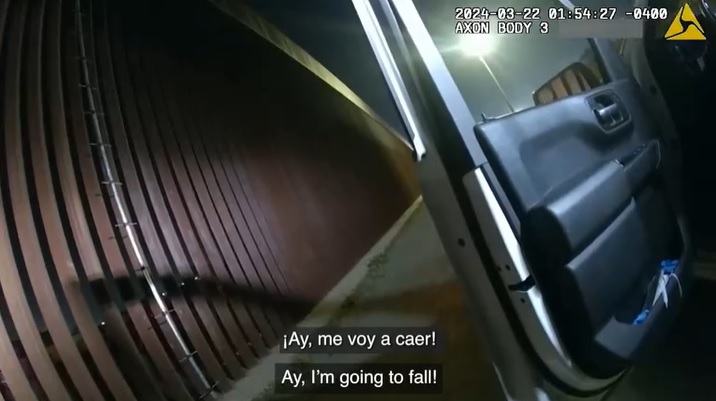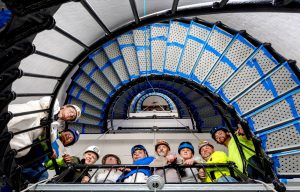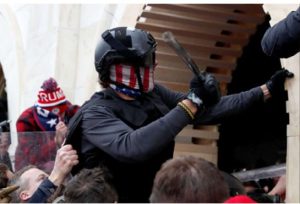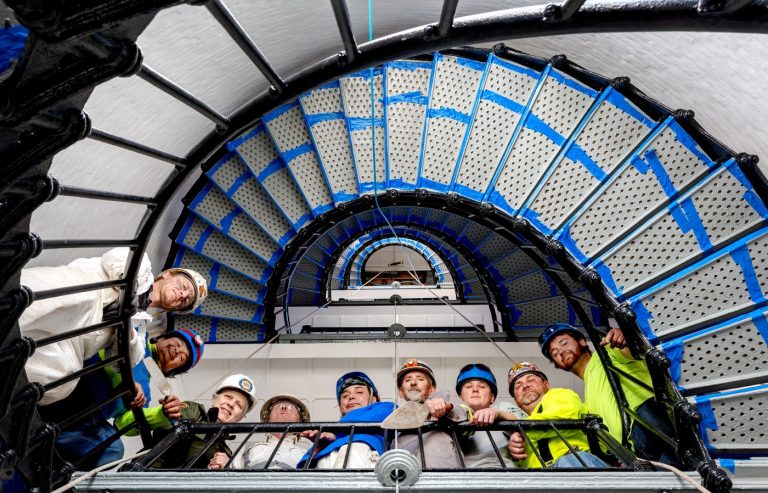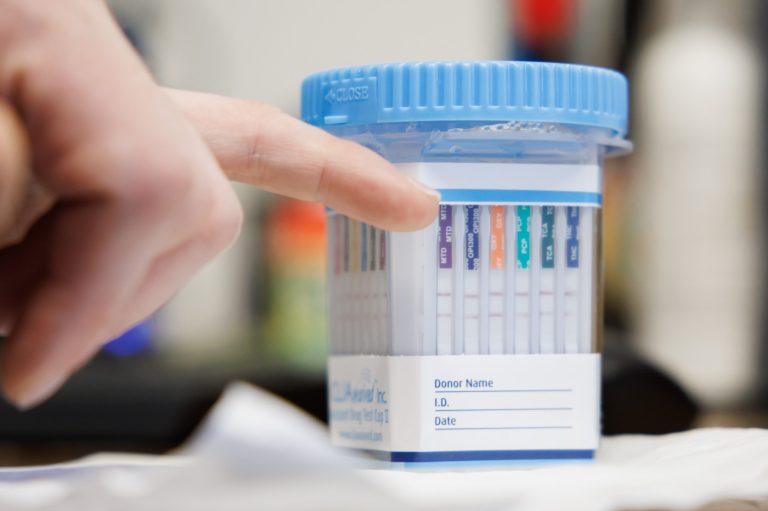A Guatemalan woman plunged to her death after she was stranded atop a 30-foot border fence near Otay Mesa for at least 24 minutes, in part due to a Border Patrol agent initially leading firefighters to the wrong location, according to videos of the March incident and information recently published by U.S. Customs and Border Protection.
The videos, released under a relatively new policy requiring CBP to publicize footage and information about in-custody deaths, highlight the dangers faced by migrants trying to cross the taller border fences installed by the Trump administration. In large parts of the San Diego area, 30-foot bollards, or steel posts with narrow gaps, replaced barriers that once stood 10 or 20 feet high.
Officials from UC San Diego Health said the number of patients injured in falls has increased each year since 2019, the year the higher fences were installed. UC San Diego Health trauma center doctors treated 440 patients who fell from the higher fence last year, up from 42 patients in 2019.
“Case numbers are continuing to rise in 2024,” a UC San Diego Health spokesperson said.
The videos also showed how a miscommunication or misunderstanding among Border Patrol agents and dispatchers exacerbated the fatal situation. Body-worn camera footage showed that the first agent on the scene asked repeatedly in radio calls for San Diego Fire-Rescue Department crews to respond to the north side of the border fence. But another agent who was leading the fire engine brought the crew to the south side of the fence where firefighters apparently couldn’t reach the woman.
Before the fire engine could find a way across the fence and back to the scene to make the rescue, the 24-year-old woman shouted to an agent that she could no longer hold on and fell to her death.
CBP did not respond to questions about what led the agent to guide the firefighters to the wrong side of the fence. The agency said in a statement that it “is committed to transparency and accountability” and the incident remains under investigation by CBP’s Office of Professional Responsibility.
“Had the CBP agents provided the correct location initially, the crews would have gone to that location,” Fire-Rescue Department spokesperson Mónica Muñoz said in a statement. “… Unfortunately, the location CBP directed SDFD (Engine 43) to was on the side of the border wall where SDFD (Engine 43) could not reach the patient with a ground ladder.”
The incident began a little before 10:30 p.m. on March 21 between the Otay Mesa and San Ysidro ports of entry, in an area where two parallel border fences separate San Diego and Tijuana.
According to CBP, a surveillance camera captured live images of several people with a ladder who had made it past the first fence and were approaching the second fence.
An agent arrived within three minutes and discovered that the woman was stuck on the top of the fence. In Spanish, the agent told the woman to stay where she was and not try to come down, promising her that firefighters would rescue her. The agent was on the south side of the fence but repeatedly told a dispatcher and other agents in radio calls that the woman was stranded on the north side of the fence.
While waiting for the fire engine to arrive, an unknown person on the north side of the fence spoke to the agent in Spanish, telling the agent through the fence that there was a ladder nearby “that they left thrown there,” apparently referring to a ladder discarded by others who had crossed the fence.
“The thing is we can’t put ladders until the fire department comes,” the agent told the man in Spanish.
“I can’t do anything?” the man asked the agent.
“We can’t do anything,” the agent told him.
“Because it’s right there,” the man told the agent in apparent protest.
“Nothing can be done,” the agent told him.
CBP did not respond to questions regarding its border fence rescue policies and whether those policies prohibit agents from attempting potentially dangerous rescues or using ladders that are not from the fire department.
About 10 minutes later, around 10:45 p.m., the second agent arrived leading the firefighters to the wrong side.
After being at the scene less than two minutes and being told by the agents that they couldn’t reach the woman from the south side, the firefighters followed the agent to find a way back to the north side of the fence. According to CBP, the closest gate was just 520 feet away, but the engine couldn’t make a sharp enough turn to pass through the gate, requiring the firefighters to use a longer route.
“We have worked with CBP extensively to train their agents to include vital details that will assist us in sending the appropriate resource for the incident at hand,” Muñoz, the Fire-Rescue Department spokesperson, said in a statement. “In this case, CBP did the right thing by telling us the height of the wall at that initial location, but CBP did not provide SDFD with the best access point to the patient. There are many areas where access is restricted, so we have made arrangements with CBP that they rendezvous with our crews and direct them in to scenes for our crews’ safety and because of the terrain, which can cause challenges in our apparatus reaching certain locations.”
As the woman and the first agent waited for the firefighters to return — with neither of them aware the engine had to take an unexpected longer route — she yelled down that she was struggling to hold on. At 10:54, at least 24 minutes after the woman first became stranded on the fence, she cried out one last time. “¡Ay, me voy a caer!” she shouted. “I’m going to fall.”
“No, no, no!” the agent yelled. But it was too late. As the last word left his mouth, the woman plummeted to the ground, striking the concrete base of the fence.
After whispering an expletive under his breath, the agent put out another radio call, this time asking for medics.
Ten minutes after the woman fell, and about 20 minutes after they’d first arrived on the wrong side of the fence, the firefighters made it back to the scene. After trying to resuscitate the woman, who had massive head trauma and no pulse, they conferred with a doctor over the phone to declare her dead. The county Medical Examiner’s Office retrieved her body hours later.
“Our crews’ mindset and intent is to locate those who need help and provide the highest level of care possible,” Muñoz said in her statement. “While the environment at the border is very challenging, there are thousands of examples over the years where our crews, in concert with CBP agents, have saved lives. Our personnel feel horrible when a fatality occurs because our intent is always to rescue, render aid and get those folks who need further medical care to the hospital.”
CBP said the San Diego Police Department and the Medical Examiner’s Office were investigating the woman’s death and the Office of Professional Responsibility would review the investigation. CBP also said that it notified the Fire-Rescue Department’s Professional Standards Unit of the incident.
Muñoz said a battalion chief from the Professional Standards Unit reviewed footage of the incident but “there was no investigation.”
Staff writer Alexandra Mendoza contributed to this report.
